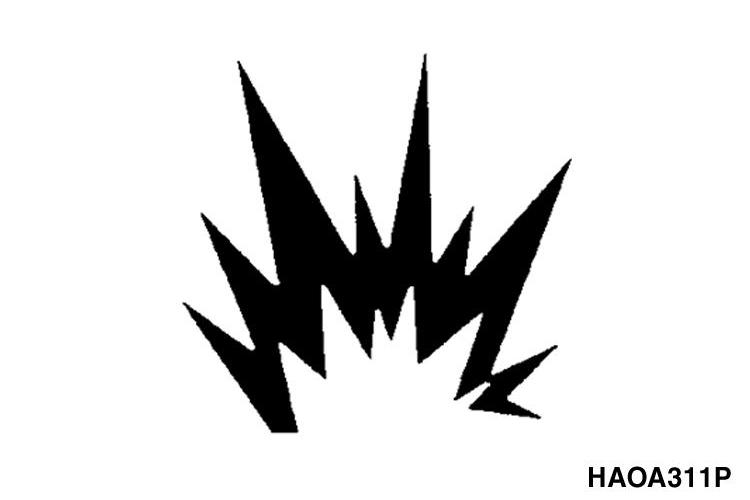
3 minute read
Work-site Precautions
ATTACHMENT PRECAUTIONS
Options kits are available through your dealer. Contact Daewoo for information on available one-way (single-acting) and two-way (double-acting) piping/valving/auxiliary control kits. Because Daewoo cannot anticipate, identify or test all of the attachments that owners may wish to install on their machines, please contact Daewoo for authorization and approval of attachments, and their compatibility with options kits.
AVOID HIGH-VOLTAGE CABLES
Serious injury or death can result from contact or proximity to high-voltage electric lines. The bucket does not have to make physical contact with power lines for current to be transmitted. Use a spotter and hand signals to stay away from power lines not clearly visible to the operator.
VOLTAGE MINIMUM SAFE DISTANCE
6.6kV 3.0 m 33.0kV 4.0 m 66.0kV 5.0 m 154.0kV 8.0 m 275.0kV 10.0 m
Figure 1
HAOA230L
Use these minimum distances as a guideline only. Depending upon the voltage in the line and atmospheric conditions, strong current shocks can occur with the boom or bucket as far away as 4 - 6 m from the power line. Very high voltage and rainy weather could further decrease that safety margin.
NOTE:
Before starting any type of operation near power lines (either above ground or buried cable-type), you should always contact the power utility directly and work out a safety plan with them.
BEFORE STARTING TO DIG, CONTACT AUTHORITIES
Below ground hazards also include natural gas lines, water mains, tunnels and buried foundations. Know what’s underneath the work-site before starting to dig.
BE AWARE OF HEIGHT OBSTACLES
Any type of object in the vicinity of the boom could represent a potential hazard, or cause the operator to react suddenly and cause an accident. Use a spotter or signal person working near bridges, phone lines, work-site scaffolds, or other obstructions.
USE CARE ON LOOSE SUPPORT
Working heavy loads over loose, soft ground or uneven, broken terrain can cause dangerous side load conditions and possible tipover and injury. Travel without a load or balanced load may also be hazardous.
If temperatures are changing, be cautious of dark and wet patches when working or traveling over frozen ground. Stay away from ditches, overhangs and all other weak support surfaces. Halt work and install support mats or blocking if work is required in an area of poor track support.
USE SOLID SUPPORT BLOCKING
Never rely on lift jacks or other inadequate supports when work is being done. Block tracks fore and aft to prevent any movement.
OVERHANGS ARE DANGEROUS
Digging the workface under an overhang - the work area beneath a cliff or under the edge of a ditch - is dangerous. Know the height and reach limits of the excavator and plan ahead while working. Avoid creating dangerous situations by moving around the work-site while making excavations. Go on to another digging area before steep overhangs are formed. Working around deep pits or along high walls or trenching may require support blocks, especially after heavy rainfalls or during spring thaws. Park the excavator away from overhangs before work shutdown.
SLOPING TERRAIN REQUIRES CAUTION
Dig evenly around the work-site whenever possible, trying to gradually level any existing slope. If it’s not possible to level the area or avoid working on a slope, reducing the size and cycling rate of the workload is recommended. On sloping surfaces, use caution when positioning the excavator prior to starting a work cycle. Stay alert for instability situations in order to avoid getting into them. For example, you should always avoid working the bucket over downhill crawler tracks when parked perpendicular to the slope. Slow all downhill swing movements and avoid full extensions of the bucket in a downhill direction. Lifting the bucket too high, too close to the machine, while the excavator is turned uphill can also be hazardous.
Figure 2
HAOA210L




